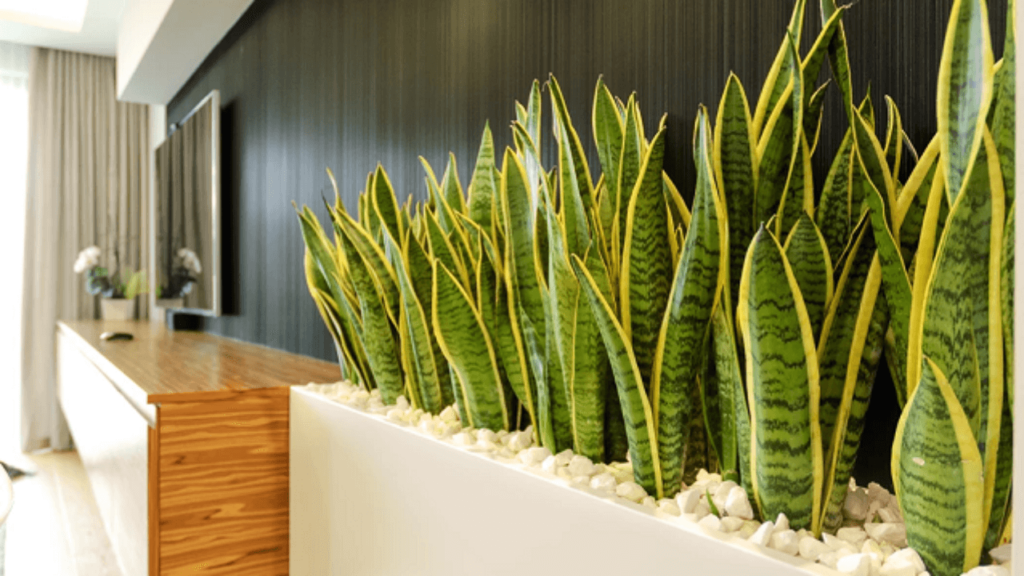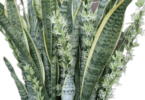Introduction
Snake plants, scientifically known as Sansevieria, are prized for their striking appearance, hardiness, and air-purifying abilities. Native to West Africa, these plants have become popular indoor plants worldwide. With proper care, snake plants can thrive in various environments, making them an excellent choice for both beginners and seasoned plant enthusiasts. This article covers everything you need to know about snake plant care, from understanding their growing habits and ideal conditions to troubleshooting common issues.

Understanding Snake Plants
Types of snake plants
There are over 70 species of snake plants, with each displaying unique leaf shapes, sizes, and colors. Some common varieties include:
Sansevieria trifasciata ‘Laurentii‘: Featuring tall, green leaves with golden-yellow edges.
Sansevieria cylindrica: Recognizable by its round, smooth, cylindrical leaves that grow vertically.
Sansevieria zeylanica: Known for its sword-like, dark green leaves with light green cross-banding.
Sansevieria trifasciata ‘Moonshine’: Distinguished by its silvery-green leaves that grow upright, creating an elegant, modern look. This variety, also known as Moonshine Snake Plant, is known for its wider leaves and unique coloration compared to other snake plants.
Benefits of having a snake plant
Snake plants are not only visually appealing but also provide several benefits:
Air purification: According to NASA’s Clean Air Study, snake plants remove toxins like formaldehyde, benzene, and trichloroethylene from the air.
Low maintenance: Their resilience and adaptability make them ideal for busy individuals or those new to plant care.
Enhancing home décor: The architectural structure of snake plants adds a modern touch to any living space.
Growth habits and characteristics
Snake plants are slow-growing and can reach heights of up to 4 feet, depending on the species. They have rhizomatous roots that store water, allowing them to withstand periods of drought. Most snake plants produce fragrant, greenish-white flowers when they reach maturity, although flowering is rare indoors.
Ideal Growing Conditions
Light requirements of Sneak Plants
Snake plants prefer bright, indirect light but can tolerate low light conditions. A sunny window with filtered light or a location with artificial light sources, such as fluorescent bulbs, will promote optimal growth. Prolonged exposure to direct sunlight may cause leaf scorching, so it’s crucial to provide protection from harsh rays.
Temperature and humidity preferences
These tropical plants thrive in temperatures between 70-90°F (21-32°C). Keep them away from cold drafts and avoid exposing them to temperatures below 50°F (10°C), as this may cause damage. Snake plants can tolerate humidity levels from 40-60%, but a higher humidity level will promote healthy growth. To increase humidity, use a humidifier, place a tray filled with water and pebbles under the plant, or group your snake plants with other moisture-loving plants.
Soil and potting mix
Use a well-draining soil mix that includes ingredients like perlite, coarse sand, or pumice to promote proper drainage. A pre-made cactus or succulent mix also works well. Avoid using heavy, moisture-retaining soils, as they can lead to root rot.
Appropriate pot size and type
Select a pot slightly larger than the root ball with drainage holes to prevent waterlogging. Terra-cotta pots are an excellent choice, as they allow moisture to evaporate more quickly than plastic containers. Ensure the pot is heavy and sturdy enough to support the tall leaves of the snake plant.
Watering and Fertilizing
Proper watering techniques
Snake plants are drought-tolerant and susceptible to overwatering, which can cause root rot. Allow the top 1-2 inches of soil to dry out before watering thoroughly until the excess drains out. Reduce watering frequency during the winter months, as snake plants enter a period of dormancy and require less water.
Signs of overwatering or underwatering
Overwatered snake plants may display yellow leaves, a mushy base, and root rot. Underwatered plants will exhibit wrinkled leaves, slow growth, and may eventually wilt. It’s essential to monitor your plant’s health and adjust watering habits accordingly.
Recommended fertilizer types and frequency
Fertilize your snake plant with a balanced liquid houseplant fertilizer diluted to half strength every 6-8 weeks during the growing season (spring and summer). Avoid fertilizing during the winter months, as the plant’s growth slows and it requires fewer nutrients. Over-fertilizing can cause leaf burn, so always follow the fertilizer’s instructions and apply cautiously.
Pruning and Propagation
When and how to prune snake plants
Prune damaged or yellow leaves to maintain your plant’s appearance and health. Use clean, sharp scissors or a knife to make a clean cut at the base of the leaf near the soil line. Regular pruning also encourages new growth and allows light to reach the center of the plant.
Propagation methods
Leaf cuttings: Cut a healthy leaf into 2-3 inch sections, allow the cuts to dry for a day or two, then insert the cut ends into moist, well-draining soil. Keep the soil slightly damp until roots develop, usually in 4-6 weeks. Note that variegated varieties may lose their variegation when propagated using this method.
Division: Gently remove the plant from its pot, divide the root ball into smaller sections with a clean, sharp knife, and replant the divisions in fresh soil. Water the newly potted divisions lightly to help them settle in.
Tips for successful propagation of Sneak Plant
Provide bright, indirect light and maintain a temperature of 70-75°F (21-24°C) for optimal rooting. Be patient, as snake plants can take a while to root and show new growth. Once the new plant has established roots and begins to grow, follow the standard snake plant care guidelines.
Common Pests and Diseases
Identifying common pests
Watch for mealybugs, spider mites, and scale insects, which can cause yellowing leaves, stunted growth, or leaf drop. Check your plant regularly for signs of infestation, such as webbing, tiny insects, or sticky residue. Check this article If your snake plant is turning yellow.
Preventing and treating infestations
Maintain proper plant care to minimize the risk of infestations. If you spot pests, isolate the affected plant to prevent spreading. Use insecticidal soap or neem oil to treat pests, following the product’s instructions. Regularly clean the leaves with a damp cloth to remove dust and potential pests.
Recognizing and addressing common diseases
Root rot, fungal infections, and bacterial diseases can affect snake plants. Proper watering habits, good air circulation, and well-draining soil can prevent these issues. If your plant is affected, remove and discard the diseased plant parts and treat with appropriate fungicides or bactericides when necessary.
Troubleshooting Common Issues of Sneak Plants
Yellowing leaves
Overwatering, underwatering, or exposure to excessive sunlight can cause yellowing leaves. Adjust your watering habits and move the plant to a location with more appropriate light. If yellowing persists, inspect for pests or diseases.
Root rot on Snake Plants
Overwatering can lead to root rot. If you suspect root rot, remove the plant from its pot, trim away the rotten roots, and repot in fresh, well-draining soil. Adjust your watering habits to prevent future occurrences.
Wilting or drooping leaves
Underwatering , low humidity, or a pot that’s too small can cause wilting or drooping leaves. Increase watering frequency, use a humidity tray, or repot the plant in a larger container to address these issues. Additionally, check for signs of pests or diseases that may contribute to wilting.
Slow growth or no growth
Insufficient light, inadequate watering, or lack of nutrients may result in slow or no growth. Move the plant to a brighter spot, adjust your watering schedule, and fertilize as needed to encourage growth. Keep in mind that snake plants are slow-growing by nature, so patience is key.
Conclusion
A thriving snake plant adds beauty and air-purifying benefits to your home. By following the tips provided in this guide, you’ll be well on your way to success in snake plant care. Don’t be afraid to experiment and learn from your experiences. Remember to share your tips and tricks with fellow plant enthusiasts, and enjoy your healthy, vibrant snake plant!



